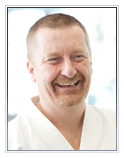At the beginning of class there is an exchange between Sensei and the class of the words “Onegai shimasu”. If you’ve ever wondered what it means, here is an excellent explanation and interpretation from Senpai Luis Patricio, who prepared it as an exercise during his preparation for Shodan. He graciously agreed to share it here:
“Onegai shimasu” doesn’t have a straightforward one-to-one translation to English. “Onegai” comes from “negau” which literally means pray/wish for something. The “O” at the beginning is the honorific that makes the expression respectful. Of course, we would never say it without it, but that is what it represents. (Do not mistake the honorific “O” with the “O” in O-sensei that means grand and has an extended sound “Oo”). The second part, “shimasu”, is basically the verb “suru“, which means “to do” in the present tense.
Onegai shimasu is used in many different situations in the Japanese culture. The basic idea is the feeling of goodwill towards future encounters between the two parties. You can think of it as something like:
I hope our relationship will be fruitful in the near future.
You can use it, for example, during a New Year’s celebration like this: “kotoshi mo yoroshiku onegai shimasu” which can be translated as:
I hope that our ties become stronger in the next year.
Or
I wish a long and lasting relationship for us this coming year.
The expression can also assume the form of a polite request, like our habitual use during the Aikido practice: “May I please train with you.” It is frequently used to solicit someone’s teachings and show you are ready to receive it.
A lot of positive qualities can be built at an Aiki Dojo and I would like to highlight five key aspects. It is a place that fosters generosity as you offer your own body so other people can practice; gratitude as your partner does the same to you; resilience as you strive to improve your technique and get back up every time you fall; an open mind to accept a new way of interacting with others; and above all cooperation because although you are always trying to get better, you are not comparing yourself to anyone else (masakatsu agatsu katsuhayabi).
We can start as an aikidoka to be able to defend ourselves, for the discipline inherent to a martial art, or simply for the workout; however, we are constantly learning those five aspects, not because we’ve been told but because we see it reflected in the actions and gestures among the members in our group. And as we learn with our whole body, mind and soul, that practice will inevitably spill over to others aspects of our lives (professional and personal).
When I say onegai shimasu, more than making a polite request, I am keeping in mind generosity, gratitude, resilience, an open mind, and cooperation – all that I’m looking forward to during my practice with my fellow aikidokas.
Onegai shimasu !!!


